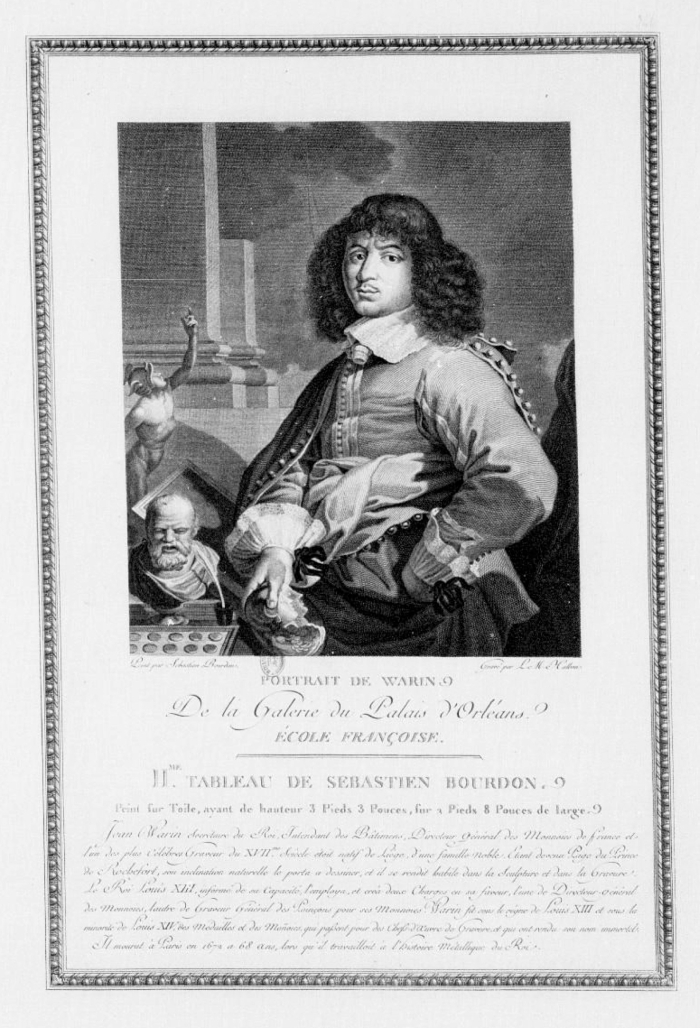
I’m slowing beginning to unravel the mystery of a lost portrait, supposedly of the medal maker and sculptor, Jean Warin (1604-72), attributed to Sébastien Bourdon (1616-71), which once hung in the Palais Royal as part of the famous Orléans collection.
The painting is illustrated in the third volume of a 1786 publication of the Orléans collection: Galerie du Palais-royal… by the abbé de Fontenay. The inscription of that print names the sitter as: Jean Warin secretaire du Roi, Intendant des Bâtiments, Directeur général des Monnoies de france et l’un des plus célébres Gravure du XVIIeme Siècle…
Jean Warin was extraordinarily enterprising man. Born Liege in 1604, he arrived in Paris in 1626 and ingratiated himself with the Bourbons via Louis XIII’s famous premier ministre Cardinal Richelieu for whom he engraved an extraordinary medal in 1631. By 1636 Warin had negotiated a controlling share in the moulin de monnaies in Paris, and in the years that followed, he held a near monopoly on the production of coins, jetons, and medals for Louis XIII and Louis XIV.
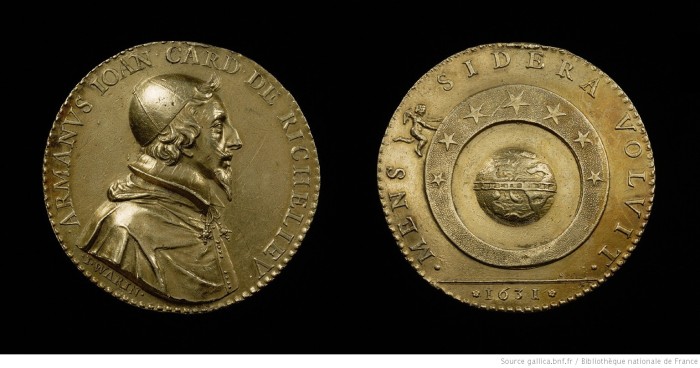

Not only was Warin the greatest medallist of the age, he was also an accomplished sculptor in marble. The portrait bust that Warin carved in 1665 in direct competition with Gian Lorenzo Bernini (1598-1680) led his French contemporaries to call him the new Praxiteles.

Since I found that print of a portrait of Warin by Bourdon in routine web searches for an artist who has occupied my thoughts for the last decade, I have been puzzled as to why Warin is shown holding the so-called “Gonzaga Cameo” (now in the Hermitage Collection, St Petersburg).

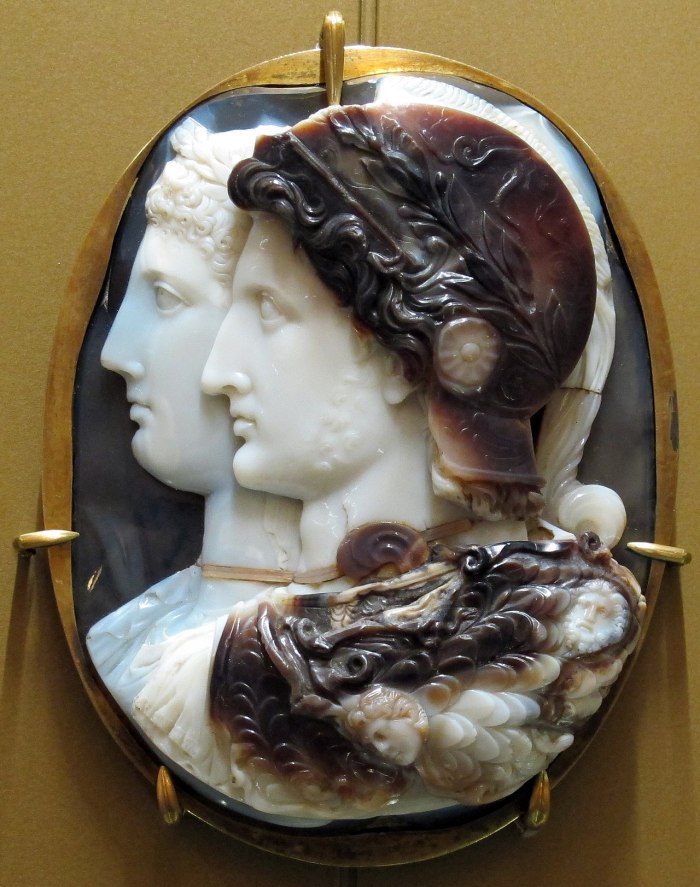
Egypt, Alexandria, 3rd century BCE. Collection, The Hermitage, St Petersburg
As Nancy Grummond persuasively argued in her 1974 article “The Real Gonzaga Cameo,” the engraved gem in the Hermitage collection, held by the figure in our print, is not, in fact, the Gonzaga Cameo after all.
The double portrait cameo once hailed by the painter and avid engraved gem collector Peter Paul Rubens (1577-1640) as the finest double portrait of its kind to survive antiquity, is more likely to be the one now held in the Kunsthistoriches museum in Vienna.
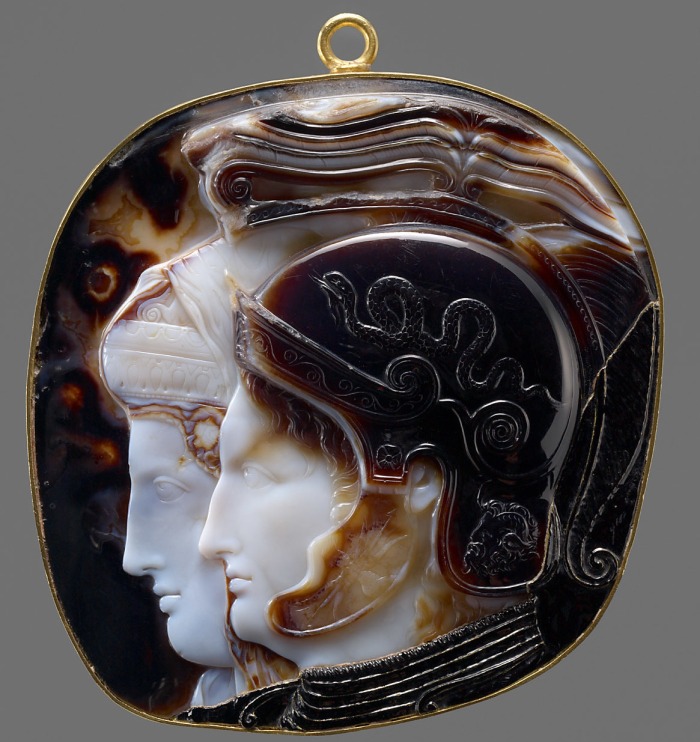
The cameo illustrated in our portrait is a Ptolemaic gem carved in the 3rd century BCE, and once belonged to Queen Christina of Sweden (1626-89), who took it with her into exile in Rome in the 1650s. Christina bequeathed the cameo to her favourite, cardinal Decio Azzolino 1623-89), and it was then acquired along with the rest of her collection by the Duke of Bracciano, Livio Odescalchi (1652-1713).
By 1794 the gem was in the collection of Pope Pius IV (1717-99), from whom Napoléon seized it for his own collection at Malmaison. After Napoléon’s defeat, Joséphine de Beauharnais gifted the gem to Tsar Alexander I of Russia (1777-1825) in thanks for the kindness and assistance he had offered her. The cameo has remained at the Hermitage ever since.
Where in the story of that remarkable Ptolemaic cameo does it come to rest in the hands of the gentleman in our print? With no evidence to connect this famous ancient gem to Louis XIV’s medal maker, I’m increasingly confident that abbé de Fontenay was wrong, and this is not a portrait of Warin after all.
The hairstyle and clothes worn by this figure date the portrait to between 1650 and 1660. It does look very much like the portraits produced by Bourdon around that date, but the man in this picture looks much younger than 45 to 55 years old, as Warin was then. Neither does he look much like the portrait of Warin engraved by Gérard Edelinck (1640-1707)—the only labelled portrait of artist from the seventeenth century.
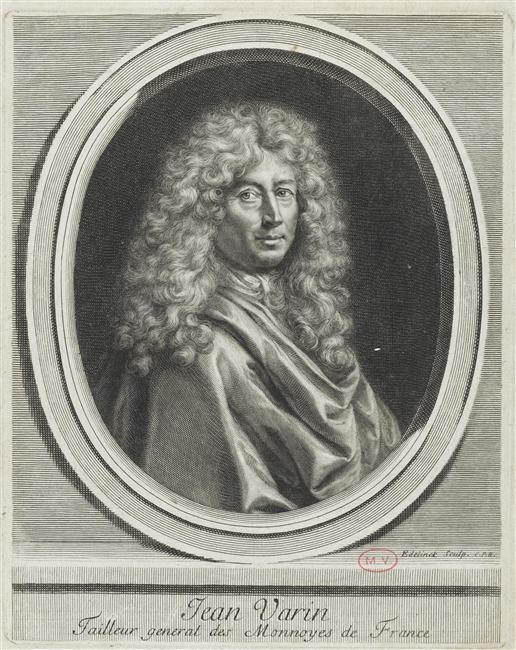
Granted, it’s hard to match distinguishing features in portraits from this period, with wigs and clothes that have a tendency to obscure evidence of age and the idiosyncrasies we look for in a good likeness. So let’s suppose that Fontenay was right, and this is Warin. How then did he come to be holding a prized cameo from the collection of Queen Christina of Sweden?
Had Warin met Christina, it would have been after her abdication from the Swedish throne in 1654, and during her two sojourns in France from 1656-58. In that period, Warin was fully occupied with his work for Louis XIV at the Moulin des monnaies, and as his preferred engraver of medals, so it seems unlikely that he would have left France to meet with Swedish Christina. But no matter if and where they would have met, it’s very unlikely that Bourdon would paint Warin holding a cameo in the collection of a foreign princess.
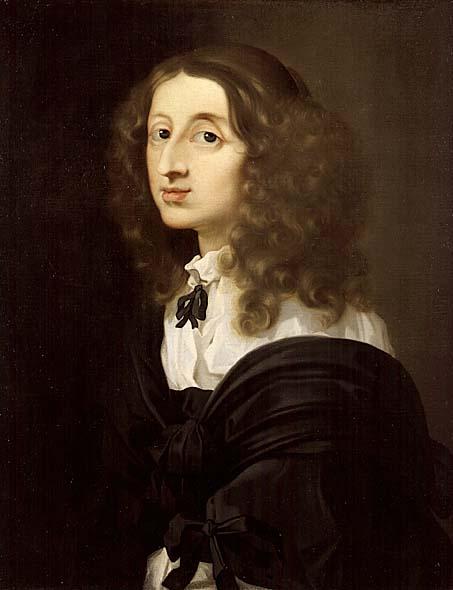
Bourdon’s portraits of artists and writers of that period tend to show the sitter with the tools of their craft. For example, a fascinating portrait of an engraver attributed to Bourdon, sold by Christie’s to a private collector in 2003 shows the engraver with a hammer in one hand and a repoussé punch in the other, about to set to work on a silver portrait.
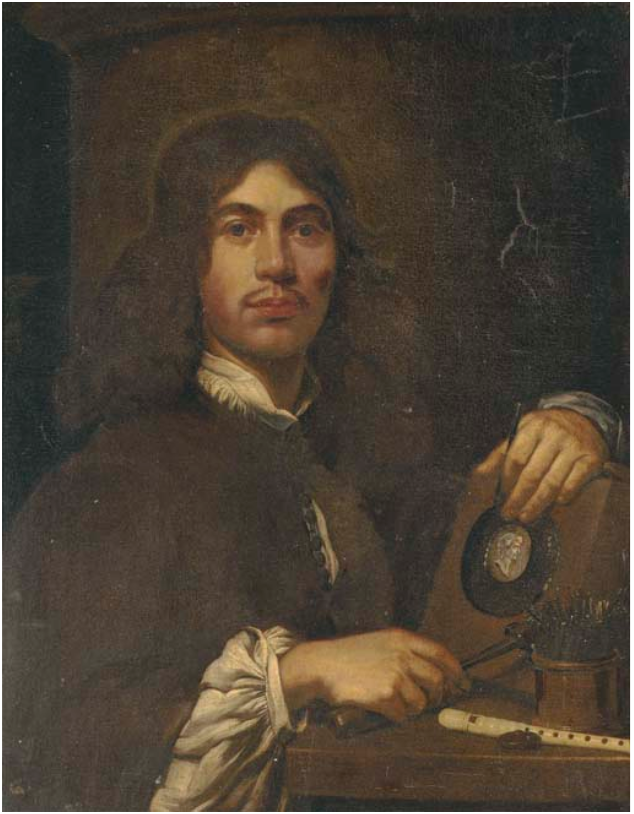
The man in our print holds the cameo, but there are other objects in the picture too—a tray of medals, the bust of a philosopher (perhaps Socrates) looking upon them, and mercury gesturing to the heavens behind (perhaps a copy of Giambologna’s famous bronze). On the table next to the tray of coins is a quill sitting in a pot of ink, strongly suggesting that the sitter’s craft was writing. I would argue that this is a portrait of an antiquarian scholar.
If we accept abbé Fontenay’s attribution of the painting to Bourdon, there is another reason to connect this lost picture to Queen Christina, as Bourdon was her principle painter from 1652.
Could this be a portrait of a friend or advisor to Queen Christina painted for her by Bourdon that she took with her to her exile in Rome? Was he an antiquarian in Christina’s circle who drew inspiration from her collection? If so, that portrait may very well have been one of the many paintings from Christina’s collection purchased by the regent Philippe II, duc d’Orléans from the heirs of duke Odescalchi after the latter’s death in 1713.
That painting, along with the rest of the famous Orléans collection, was sold en masse by the regent’s heir, Philippe Égalité in 1792. The collection was kept together and passed through various hands until in 1798, twelve years after abbé Fontenay published his three-volume catalogue of the paintings at the Palais Royal, when the collection went on sale in London at two venues. A catalogue for the paintings displayed at the Lyceum in the Strand in December 1798, lists six portraits by Bourdon. Queen Christina is the only one of those six sitters named. Annotations to one copy of that catalogue suggest that our painting was one of the five anonymous portraits by Bourdon that sold for 10 guineas a piece.
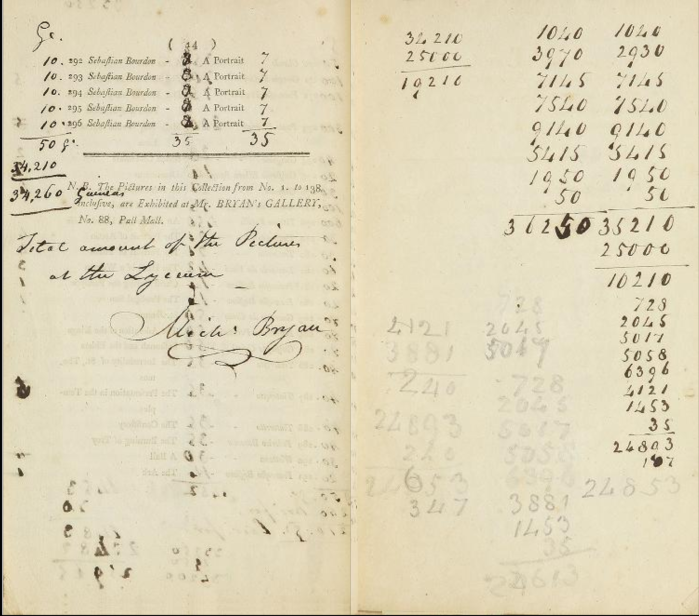
All evidence points towards an error made by Fontenay in his catalogue of paintings at the Palais Royal. In reattributing the portrait as an antiquarian in the circle of Queen Christina of Sweden, we are losing one of only three known portraits to survive of a great artist who helped to form in the image of Louis XIV in the eyes of posterity.
It is my hope that further research into Queen Christina’s circle, and the Orléans collection will help to name this sitter and to shed more light on the life of the extraordinary Ptolemaic Cameo that he holds.
Robert Wellington, 2019